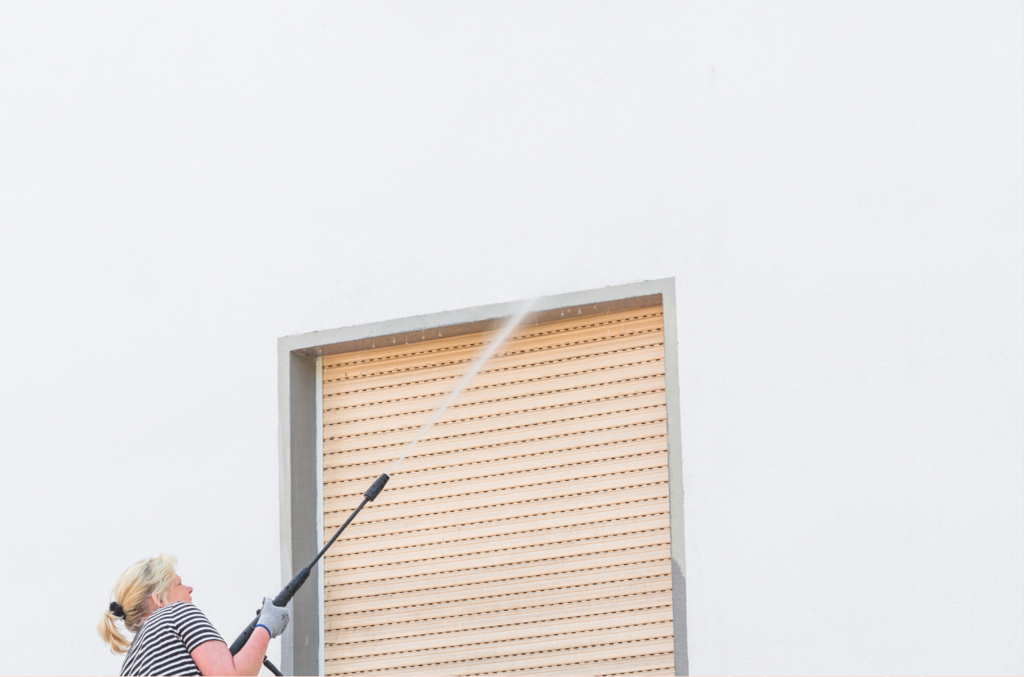
When you’re considering a weekend of domestic DIY, spring cleaning or general admin in and around the home, cleaning your roof rarely tops the list of priorities. Out of sight, out of mind, and all that; there are bigger fish to free from grease and dirt.
Indeed, most homeowners simply don’t think to clean exterior surfaces, because they either lack the proper equipment to do the job, or don’t know the proper techniques used to do carry out such cleaning safely and correctly.
Let’s shed a little light. There are two basic methods used for cleaning surfaces on the outside of your property, which includes roofs, siding, sidewalks, and more, most commonly described as soft washing and pressure washing.
With the help of A+ SoftWash, here’s our IDEAL guide on how to clean your home’s exterior, using soft or pressure washing.
PRESSURE WASHING VS. SOFT WASHING: WHICH IS BEST AND WHEN?
The primary differences in the two styles of domestic cleaning for exterior surfaces largely lie in the amount of force used. The clue’s in the title, huh? Pressure washing is highly effective, sure, but can also damage surfaces if not used correctly while soft washing may be more efficiently used for cleaning roofs, windows, and softer woods since it’s less aggressive in its application. Both types of cleaning have their advantages and disadvantages, and a strategy for using them. Let’s examine a little further.
SOFT WASHING
In a nutshell, soft washing is a technique that most commercial cleaners use when pressure washing is not appropriate. Soft washing is used most often used for cleaning home roofs, windows, and other surfaces where more brittle types of wood have been used in the construction process.
When mould stains a roof, for example, soft washing is more appropriate for removing it and restores the original beauty of the roof without causing damage to the shingles, the understructure, or the foundations of the building.
One common mistake made in using high-pressure washing, for instance, is its application when cleaning decks. Since the more pliant types of woods that are used in their construction can be damaged fairly easily, it’s wiser to use soft washing here.
PRESSURE WASHING
High-powered pressure washing is most often recommended when the surfaces which require cleaning are harder and less porous. Surfaces that are most often cleaned using high-pressure methods are driveways, sidewalks, and even garage floors. Not only are the results of this method of cleaning (when applied to the correct surfaces) effective and all-encompassing, but the likelihood of damage is also extremely low on concrete. Owning a pressure washer but if you only need it occasionally, good news, you can shop for rental pressure washers online.
WASH RECOMMENDATIONS
Any time a homeowner isn’t sure which technique of cleaning should be used in a single, specific case, it’s always sensible to consult a professional on what is best to use so as to avoid damaged surfaces. In most cases, not only does a professional have the proper equipment to do the job, but they also have the experience and expertise that will allow them to determine which technique will do it most safely and efficiently.
As a general rule of thumb, however, whenever high-pressure devices may damage a surface, opt for soft washing. Regardless of the application, pay attention to the manufacturer’s instructions for how their product should be cleaned. This will minimise the chances of you leaving a surface in a state of disrepair. Usually, the manufacturer will recommend using soft washing or, at least, lower pressure settings than those which you might consider safe for harder surfaces.
DEVELOPING A ROUTINE
Regardless of the surface or the method used for cleaning it, a homeowner should always establish a routine for cleaning rather than simply relying on cure ahead of prevention. In doing so, you’re in danger of consistently fighting a losing battle.
Hey, keen cleaner! We’ve got loads more tips on getting your home ship-shape and sparkling; check out these 10 professional home cleaning hacks for more of the same.





